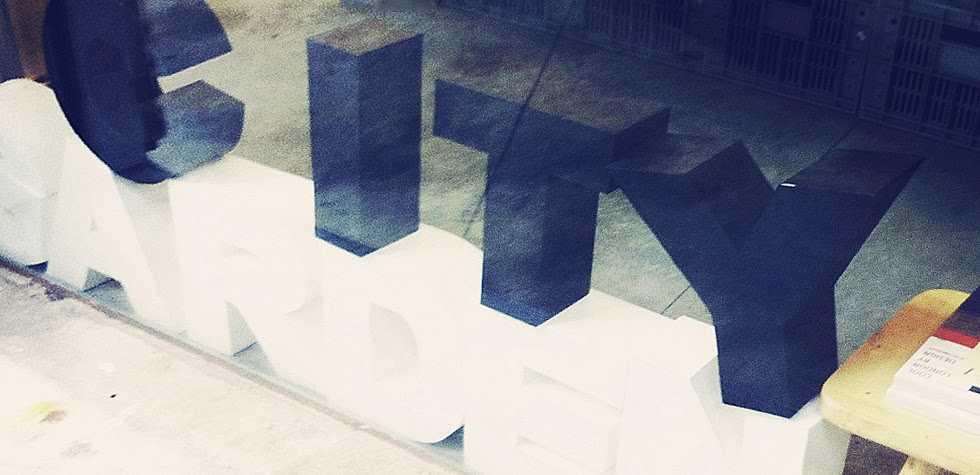(本文收錄於《On Honest Design:蘆沢啓治空間.物件設計作品集》)
文/王家祥(REnato lab 創辦人)
最近生活周遭充斥者許多詞彙,如「調適」、「社企」、「自造*」及「共創」,看起來述說的是不同的事物,但是卻和我們的生活息息相關。蘆澤啓治所建構的石卷工房可以說是完美結合上述的詞彙,更難得的是將它變成了世界知名的品牌。
人在發生巨大災難後,部分會伴隨創傷後遺症,產生情感解離、麻木感,日本311 地震後摧毀的不僅是當地的建築,也摧毀了居民的生活,災民必須離家住在臨時住宅中,因家園及身心受創,人們在心中築起一道藩籬,不再與人互動,蘆澤啓治利用設計的專長,設計出災民適用的家居用品,也藉由設計的力量改變了人與人的關係。
他在受災區觀察到災民的需求,使用當地有限的材料及工具,設計出簡單容易組裝又充滿溫度的傢俱。我們的世界已經充斥了許多工業產品,缺少的其實不是一把新的椅子或是一盞新的燈,而是感動人心的設計--再酷炫的造型也比不過實用性。石卷工房成立後結合更多設計師,設計出可讓一般民眾組裝生產的產品,透過自造及共創建構能解決當時社會問題的企業,有效調適了災害對於人與社會的影響。
身為環境工程人員,在近年有幸能跨入設計領域,發現環境化設計雖然不是新名詞,但實際應用案例始終很有限,好消息是有越來越多的設計師參與。蘆澤啓治擅長使用如玻璃、金屬及木頭等單純的材料,在設計時力求簡潔,注重產品的功能性,因此創造出許多具有獨特風格及功能的建築及傢俱產品,不僅在產品上盡量採用簡單元件組合,更融入規格化設計讓所設計的元件可以廣泛應用於建築及傢俱,這不就是環境化設計的具體展現?而且因為材料及結構單純,也有助於未來將各種原料回收再利用。
但是石卷工房令人讚嘆的不僅於此,因為雖然它已成為國際知名品牌,仍持續舉辦工作坊並將其拓展到海外,如法國、臺灣、菲律賓等,協助教育及重建的工作,並且希望國外市場不需仰賴產品進口,而是運用在地材料及人力進行製造,在這裡所創造的不僅是一種新興商業模式,更是一種與環境共生的經濟模式。
力を合わせて新しい未来を拓く
文/王家祥(REnato lab 創立者)
最近、私たちの暮らしの中では、様々な「新しい言葉」が飛び交うようになりました。例えば「調適(和訳:調和)」、「社企(和訳:社会的企業)」、「自造(和訳:メイカームーブメントの「メイカー」)」、または「共創」などがあります。それぞれの言葉の意味は違いますが、私たちの暮らしに深く関わる言葉だと考えられます。建築家の芦沢啓治氏が立ち上げた石巻工房は、まさにこれらの言葉の意味を体現したものであり、世界的にも知られるようなブランドになっています。
突然巨大災害が発生すると、一部の被災した人々は、その後何かしらの心理的なストレス障害(PSTD)を抱え、解離性同一性障害や感情の麻痺などの症状が生じると言われています。311 東日本大震災では、その地域の建物だけでなく、住民らの暮らしも崩壊しました。被災者らは住んでいた家を離れて仮設住宅への入居を強いられ、故郷への思いや心の傷により、心を閉ざして、人との交流も希薄になってしまいました。その状況を見た芦沢啓治氏は、自身が持つデザインの専門知識を生かし、被災者向けに暮らしのものをデザインし、また、デザインの力で人と人との繋がりに変化をもたらしました。
被災地では住民たちが何を欲しているのかを見ながら、現地で調達できる限られた材料と道具を使い、簡単で組み立てやすいもの、温もりも感じられる家具を作り出しました。我々の周りには、既に工業製品が溢れるほどたくさんあります。今日必要とされているのは、新しい椅子やランプではなく、人の心を動かすデザインです。――つまり、優れた外観や新しい機能というより、実用性が一番なのです。この石巻工房は立ち上げ後、より多くのデザイナーを引きつける場となり、一般人でも簡単に組み立てられるような製品を生み出しています。その時に発生している社会問題(ここでは災害)を解決する、「メイカー」と「共創」の仕組みを用いた企業の起業は、災害が人間と社会に与える影響の両方に対して効果的であると考えます。
私は、環境工学に関わる者として、デザインの分野に足を踏み入れてよかったと近年感じるようになりました。「環境化設計(和訳:環境に配慮したデザイン)」は新しい言葉ではありませんが、その実例はまだまだ少ないと思います。その一方で、賛同するデザイナーがこれからますます増えることは、また嬉しい話です。芦沢啓治氏は、ガラス、金属、木などシンプルな材料を使いこなすのが得意です。シンプルで機能性を追求したデザインによって、独特なスタイルと機能を備えた建築や家具を生み出しています。また、製品自体をできるだけシンプルにするだけでなく、その仕様をユニバーサルデザイン化しており、作り出したパーツを建物や家具により幅広く適用させる仕組みを取り入れています。これは、まさに環境に配慮したデザインが具体化された実例だと言えるでしょう。将来のリサイクルまでに配慮しており、材料も仕組みも実にシンプルなのです。
石巻工房が素晴らしいといえる理由は、これだけではありません。既にワールドワイドで周知されたブランドであるにもかかわらず、今もワークショップを開催し続けており、教育や復興といった分野のビジネスにおいて、石巻工房が持つ概念をフランスや台湾、フィリピンなどの諸外国へと広げています。製品の輸入に依存せず、現地では現存する材料とマンパワーで行われるを願い、惜しみない協力を注いでいます。石巻工房が作り出したのは、新しいビジネスモデルだけでなく、環境と共に生きるエコノミー(経済)モデルなのです。(翻訳/ momiuri & konomi, KEIJI ASHIZAWA DESIGN)
Gathering of Strength towards Innovation of the Future
Jia-Hsiang WANG (the establisher of REnato lab)
“Adaption”, “Social Enterprising”, “DIY” and ”Cobranding” – these are very common terms used recently in our everyday life. Each term appears to define itself, yet as a whole they immensely relate to our living. Ishinomaki Laboratory, founded by Keiji ASHIZAWA , is a perfect integration of all the above, and nevertheless turns itself into a world-renowned brand.
The aftermath of huge catastrophe, often is accompanied by emotional turmoil of detachment,
numbness and trauma among the victims. The Great Earthquake 311 in Japan destroyed not only the local architectures, but also the lives of its people at that time. The victims had to leave their homes and moved into temporary shelter. From losing home, affected by physical and psychological injury, their people has been pushed to the edge where everyone shuts themselves away, unwilling to interact with each another. With his ability to design, Keiji ASHIZAWA designed living supplies befitting the needs of the victims, at the same time improving the social relationship among the people through the power of Design.
At the disaster zone, he observed the needs of the victims, utilizing available materials and tools on site, easy-assembly and warm-hearted furniture kit has been created. In this world filled with bundant industrial products, what we were missing was neither a brand-new chair nor a lamp – It was a design which touches people’s heart, embracing function over avant garde. Subsequent to the establishment of Ishinomaki Laboratory, through affiliation with more designers, they designed and produced self-assemble kits in relative to the common public. The DIY concept and co-branding simultaneously counter both social issues for enterprises as well as the adaption to the disaster’s post-effect on the society with great efficiency.
As an environmental engineer honored being able to be involved in the design field, I have realized that environmental design is no longer a new term. Even though practical application is yet limited, good news is that the circle of participating designers is expanding. Keiji ASHIZAWA being good in the use of basic materials like glass, metal and wood, coupled with his quest of simplicity and functionality in design, hence was able to create many unique architecture and furnishing designs. Besides simplifying used elements, the fusion of modulation allows great flexibility of application in both architecture and furniture. More but not least, the straightforwardness of material use and assembly also supports the environmental awareness of reuse and recycling.
Achieving international recognition did not stop Ishinomaki Laboratory to continue running workshops while expanding it across the globe, such as France, Taiwan, Philippine and more, in order to aid education and restoration works; which is rather plausible. They encourage dependency from imports and selfsufficiency by the use of local materials and man-power. Instead of a new business prototype, an environment co-exist economic model has been formed. (Translation / KEIJI ASHIZAWA DESIGN)



沒有留言:
張貼留言